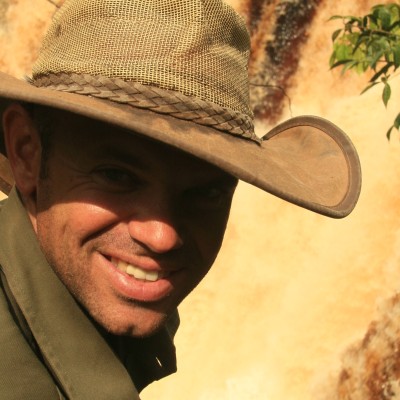
Serengeti and the migration
All the do's and don'ts you want to know before planning your safari
Co-owner of Journeys Intent, Jean du Plessis, has spent more time in the Serengeti than most other people in this world. Jean has covered all corners of this enormous eco-system for more than 20 years - not only by vehicle in the areas available for game drives but very often on foot in remote parts, where very few people have access.
Here are Jean’s thoughts on how to get the best experience in the Serengeti.
The Serengeti is nearly 15,000 sq km! This immense land mass is unfenced and forms the heart of a much larger protected area. The wildebeest migration is known to move in an area of 40,000 sq km. The Serengeti, Ngorongoro, Masai Mara, and various game reserves form part of this unique ecosystem.
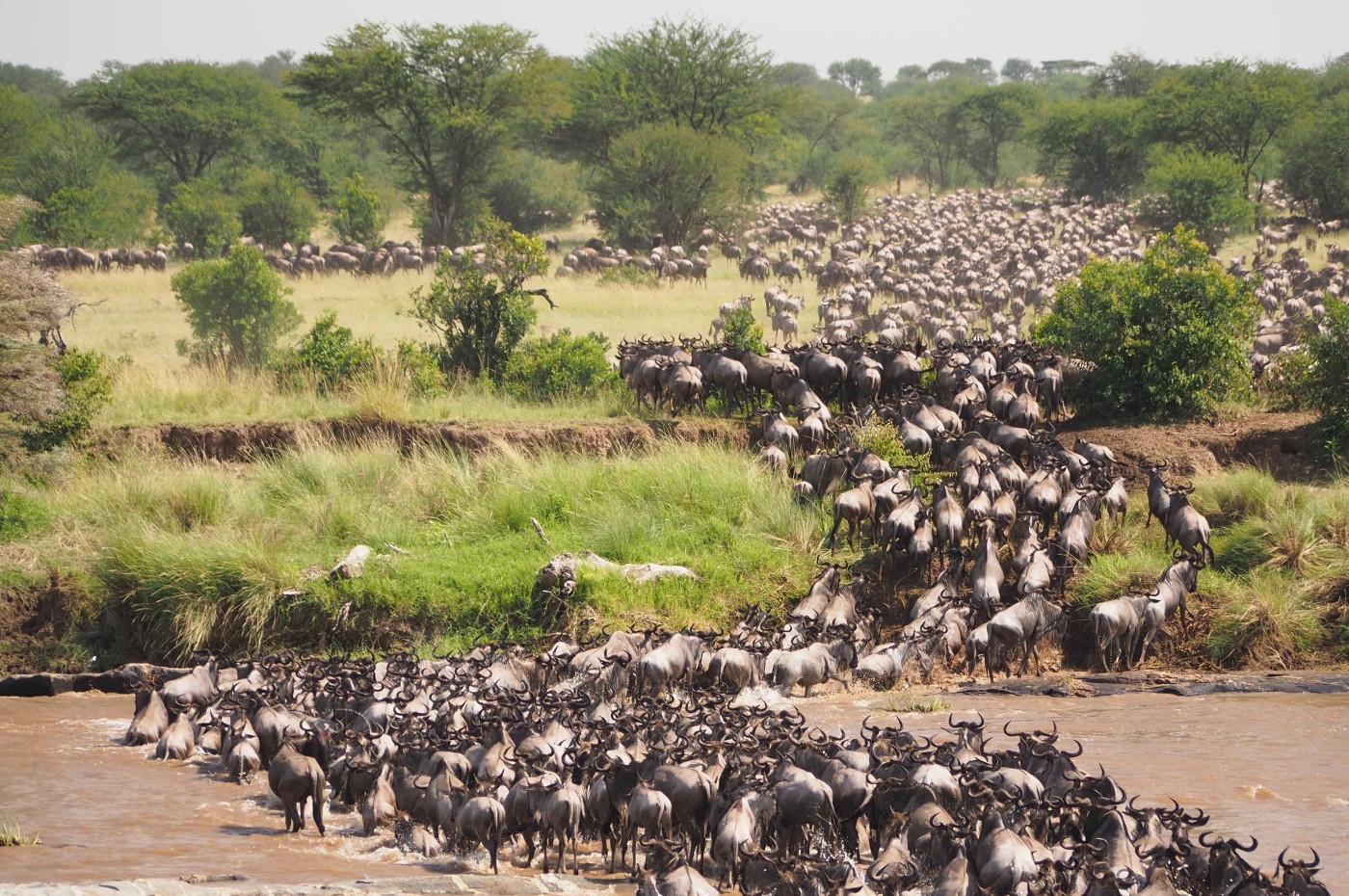
The Serengeti migration
It's this massive movement of herbivores that drives this entire system. When 2.5 million animals move together they determine and define the area and how everything else lives!
Wildebeest, Zebra, and Thomson Gazelle are the animals making up the migration. A large number of nomadic predators will follow the migration through the park along with a few thousand vultures.
The migration is stunning to experience but the other 29 species of herbivores are very often overlooked. Eland, Giraffe, Buffalo, and many others are also found in the Serengeti!
There are actually 28 species of large and small predators that live in this national park. and they all move around in the vicinity of the migration. It's often a feast or famine depending on where exactly the migration might be.

The Serengeti is always great - all year
It's a misconception that this national park is seasonal! and it's also a misunderstanding that the migration only takes place for a few months. Migration is always present in some parts of the park. To add to this, a good safari does not always follow in the footsteps of the migration. To mix up the program, going a different direction is key to a good safari experience.
Many camps and companies chase the migration, and it can easily become overcrowded with tourists. To escape the 100% migration-driven game drives we often go in search of other experiences in non-migration areas.
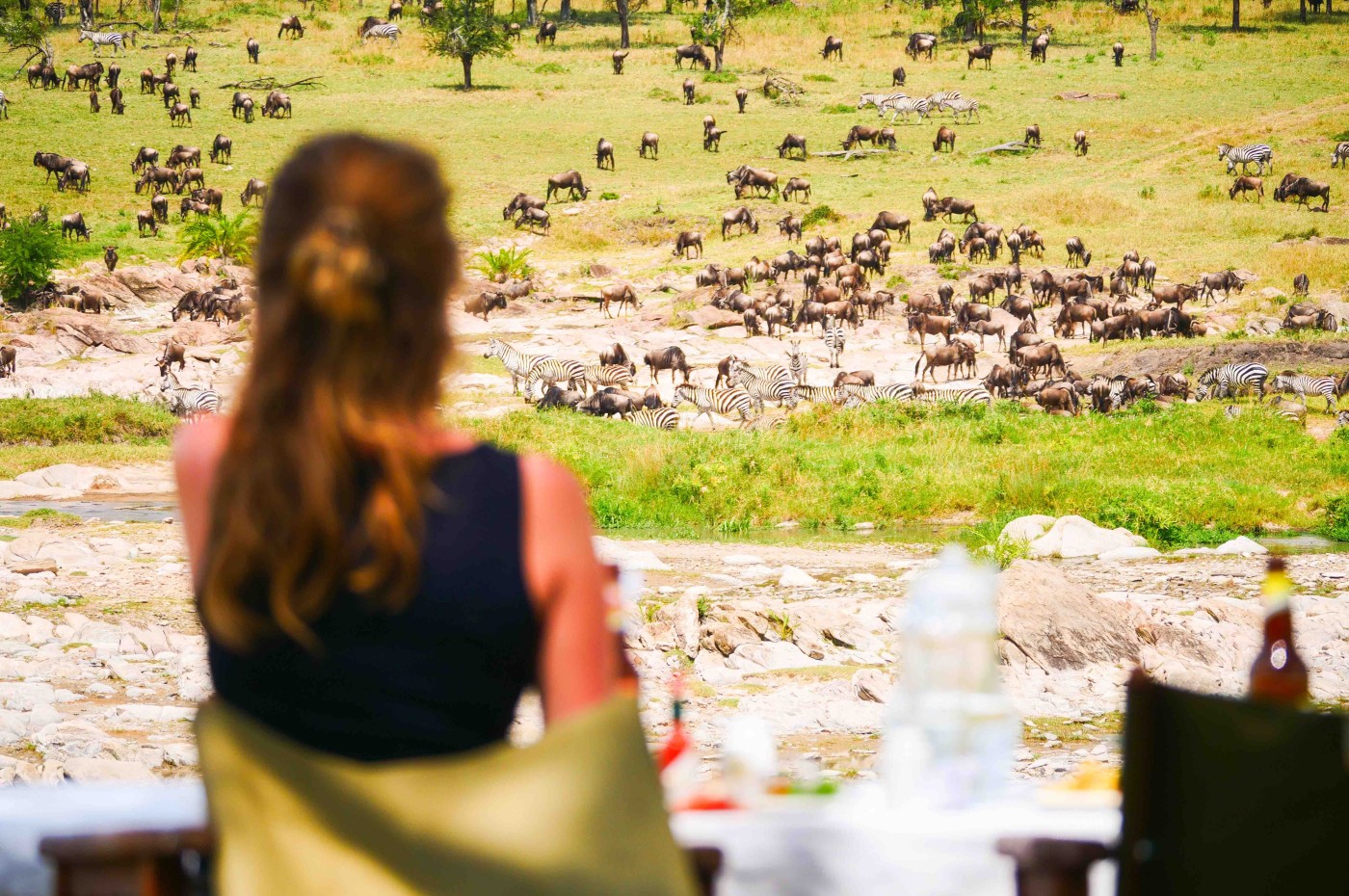
Wayo Serengeti Green Camp, Tanzania
The circle and dynamics of the migration
The wildebeests prefer the short grassy plains of the southern Serengeti. These plains were formed over 3 million years ago from the eruption of the various volcanoes in the Ngorongoro Highlands.
Rain in the Serengeti arrives as huge intense thunderstorms, flooding the plains in a very short time. The plains are vast and flat, and the water runs off fast, and very little stays behind to sustain anything more than a very specific sort of grass.
These plains are also in the “rain shadow” of the Crater Highlands and generally don't receive a huge amount of seasonal rains.
These factors secure the grass as plains. Besides being able to see for miles and thus being able to see hunting lions, these grasses are also full of copper and zinc, minerals that are key elements for milk production, and the perfect place for 250, 000 newly born wildebeest.

November generally receives a shorter period of rain in the Southern Serengeti ensuring nice lush and green plains from December onwards. The herds will start to move onto these plains in late December and go into a bit of a feeding frenzy on these very nutritional grasses. Most of the females will be pregnant and will be aiming to get themselves in the best possible condition!
If you come in February and March all the calves will be born within a quite short time frame. Besides good feeding for their moms and great visibility, the fact that so many calves are born at the same time,” floods the Serengeti infrastructure”. There simply are too many calves for the predators to eat, and this way many do survive.
The migration will generally be hanging around in the southern plains till the end of May when the plains start to dry up.
Wildebeest pretty much should be seen as rain chasers, and as plains dry up they start to follow thunder clouds over Lake Victoria in the West and the rain in the Northern parts of the park.
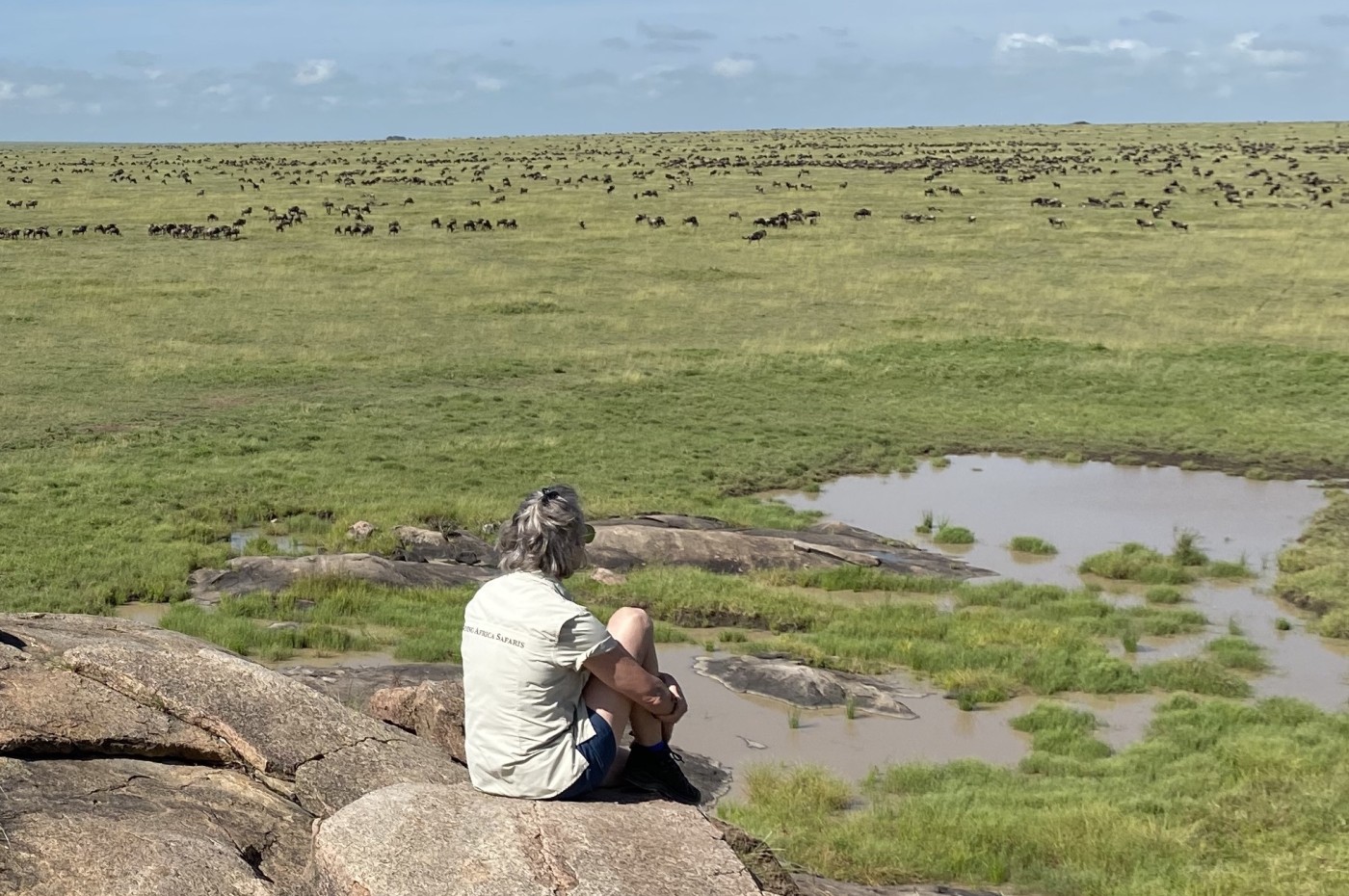
Wayo Walking Safari Camp, Serengeti
June is always hard to predict where the herds will be since they generally split up and move west and through the central Serengeti. They are simply following the rain and eventually arrive in the Northern Serengeti around the end of July. This is when they meet the Mara River and when some of the dramatic river crossings happen, and when you can experience the Mara crocodiles having a feast!
The herds will now stay in the Northern Serengeti and move between the Tanzanian and Kenya side of the ecosystem. There really isn't any rhyme or reason besides following regional thunderstorms.
August is essentially mating season and one of the few times the wildebeest population stake claim to smaller territories.
The rain starts to move south around mid-November and the herds follow back down into the Southern Serengeti. November is also really tricky to predict the exact location of the herds.
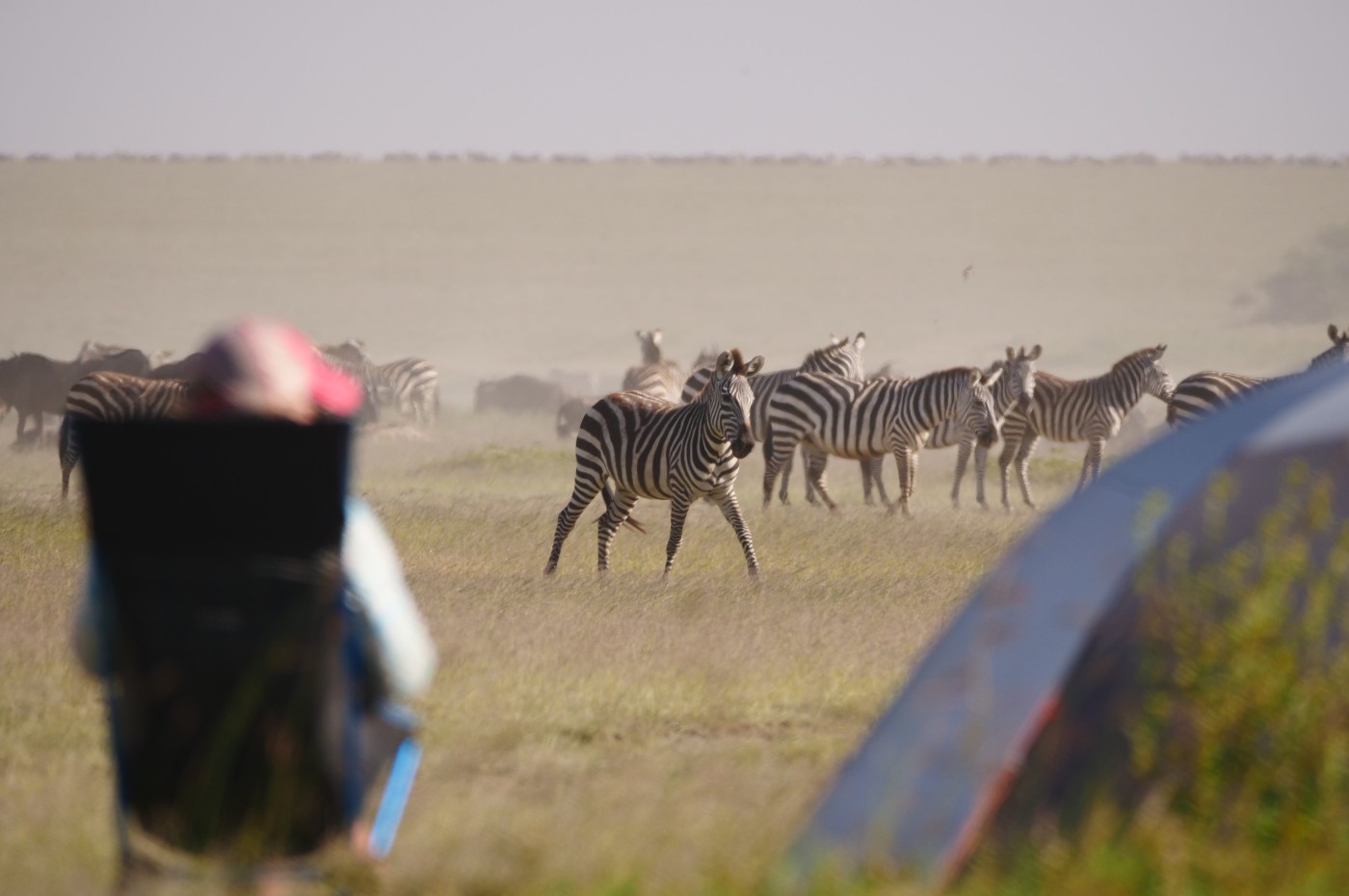
Wayo Walking Safari Camp, Serengeti
Avoiding the crowds means everything
We have a few camps moving with the migration. This is a very important part of our operation. We move with nature and adapt location each season to secure the best possible experience. Journey's Intent DNA is all about avoiding the big crowds and going beyond the beaten track. Our camps are always on the periphery of large, remote wilderness zones where we also conduct our walking safaris.
Read more about our Wayo Serengeti Green Camps, which moves with the migration, and Wayo Serengeti Walking Camp, which brings you to areas of the park only few have access to.
